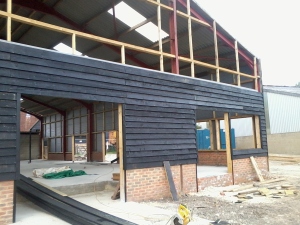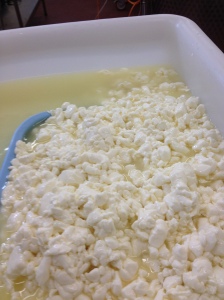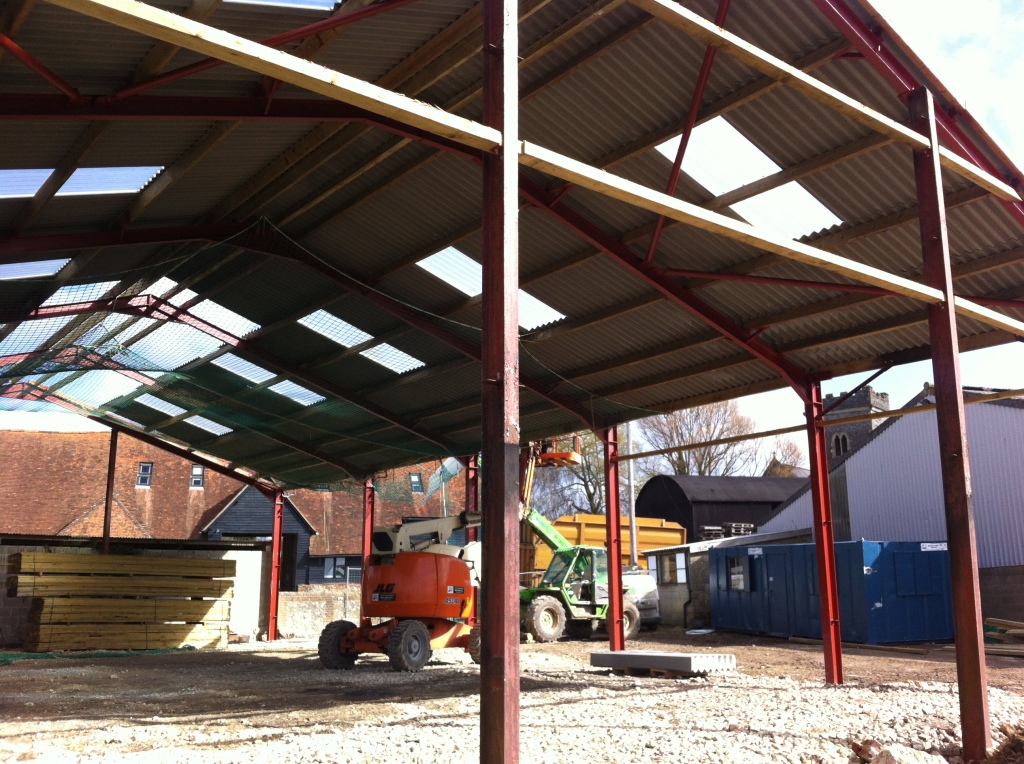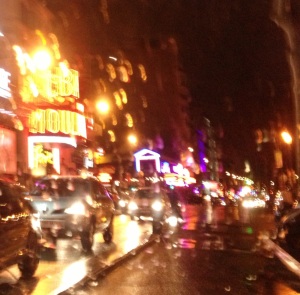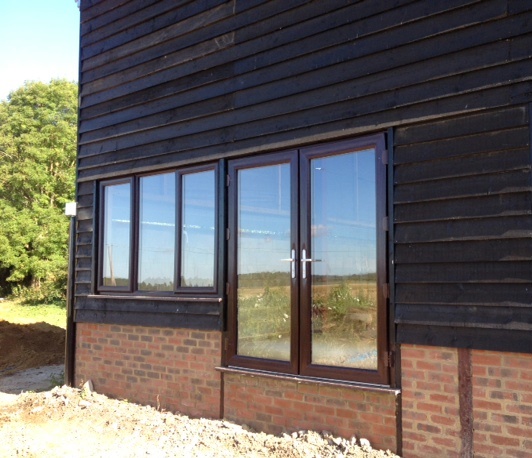
Lots of bits and pieces have been happening recently. Building work has slowed down a bit since the heady days when the walls went up. The thing holding us up is that the concrete laid as foundations for our floor has cracks and although it’s quite likely that these are just cracks caused by the concrete drying, we need to be sure they aren’t a sign of something more serious like subsidence. So we wait for someone with structural engineering knowledge to assess them and sign them off.
Once that is done we can put in the framework for the first floor and with that in place, we can start to put in the panelling that forms the interior walls. In other words, we’ll have rooms.
Meanwhile I have been working on paperwork still – the end is in sight finally. Actually, I hope it is, every time I say that to myself, I remember some other record sheet or schedule that I’ll need and it goes on the job list. We’ve ordered and paid for our industrial dishwasher, the final payment on the equipment from Avedemil has been made and 4 pallets including vat, racks, wash tubs, multimoulds and stainless steel tables should soon be on their way to us. The pipework to divert our milk out of the main milkline before it can be cooled or can get into the bulk tank is on order and we’re pushing for it to be in by 11th August.
Why 11th August did you ask? Well because officially I have a date to move south. 7th August. And come what may, I will be on the payroll as of the 11th as with Rose on holiday in Greece, I’ll be managing the build and using our warm milk, I’ll be making trial cheeses in the kitchen of my house and then maturing them in a wine fridge. It will be good to get my hands on some curds again – just have to remember to order a few key bits of gear: starters, a tub to make cheese in, an electric blanket and indeed the wine fridge.
The trial cheesemaking came about on a visit from Jason Hinds, David Lockwood and Bronwen Percival from Neal’s Yard Dairy. They came for an informal morning chat to look at progress, talk about the quality of cheese they are looking for and its implications for milk quality, sales and advice on our financials. All three of them felt that as soon as the milk was in place, making some kitchen trials would be well worth the exercise in understanding where the milk quality is at this year (it’s bound to be rather different to February when we last did any testing and again to last summer when I was making trial cheeses at SAF) as well as hopefully having something to taste and start to comment on. We’re going to go down to London for a big cheese tasting with Bronwen at the end of August which will be a useful calibration exercise. In theory I know what their cheeses are like but it’s a few years now since I’ve been tasting them regularly and I’ll need a refresher to check out our washed rind competition. For Rose, seeing how Bronwen tastes, assesses flavour and quality and understanding what she is looking for will be invaluable. It’s her job to look after sales when we’re up and running so a bit of calibration with one of our customers (we hope) can only be a good thing.
So it’s a mixed bag as I’m sure will be familiar to anyone who’s been involved in building work: some progress, some delays and on not too many occasions the odd step backwards. Overall though we’re getting there and with a confirmed date in the diary for me to start work, it’s getting real.

